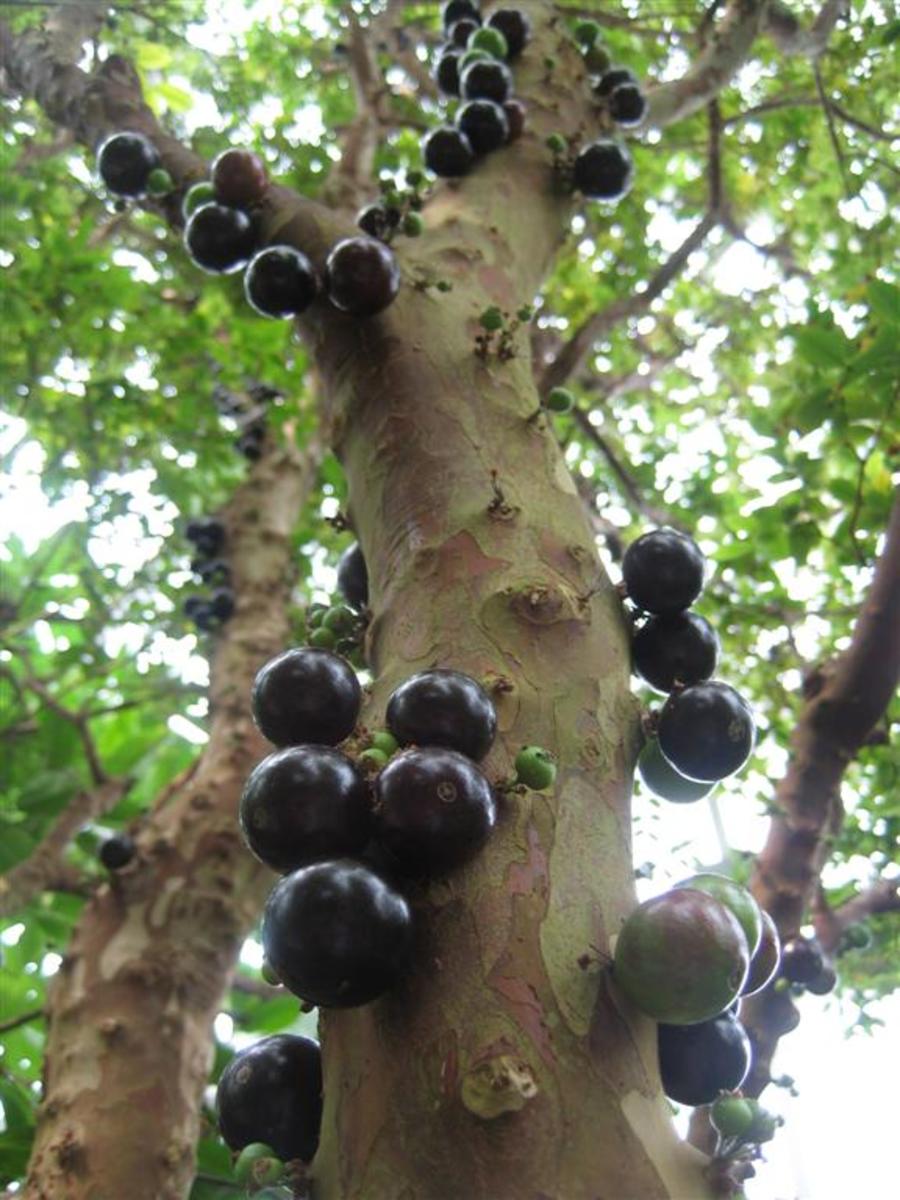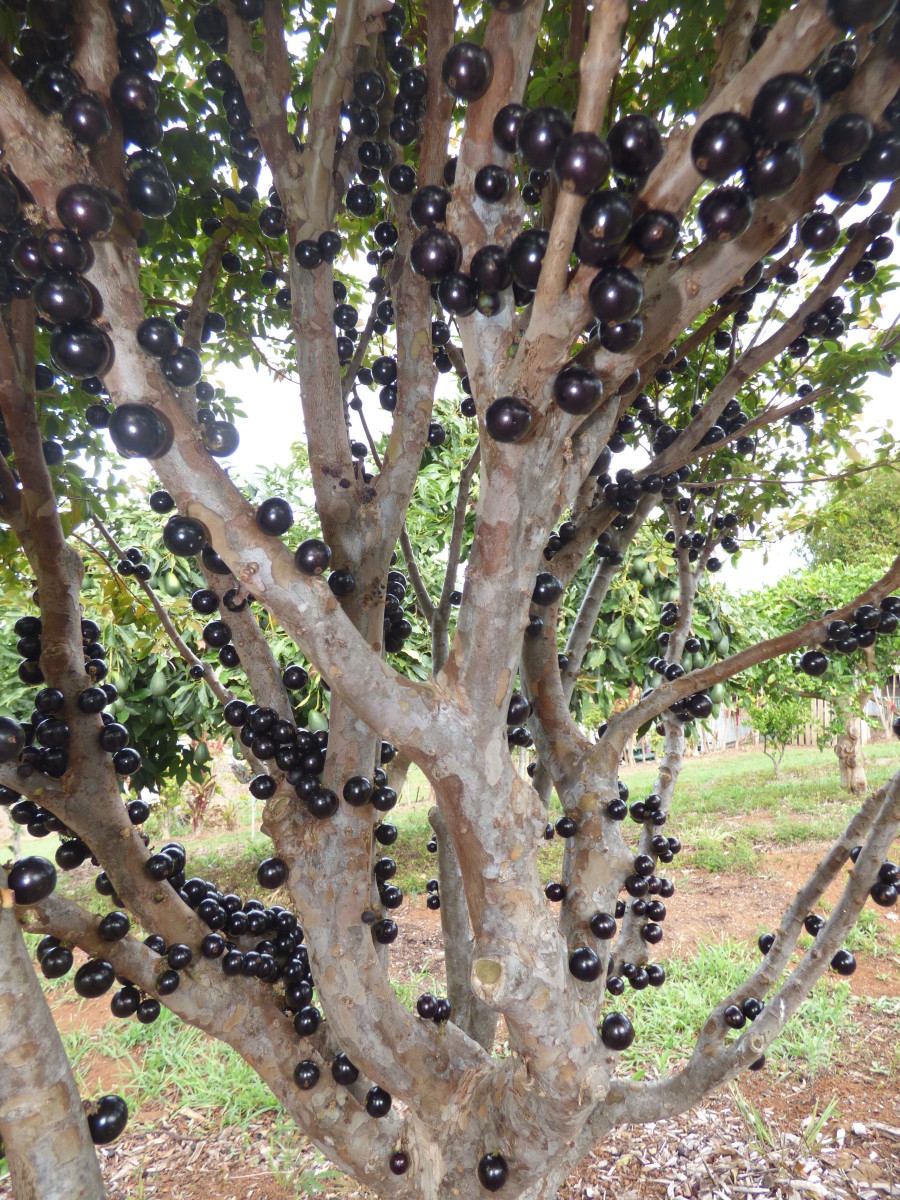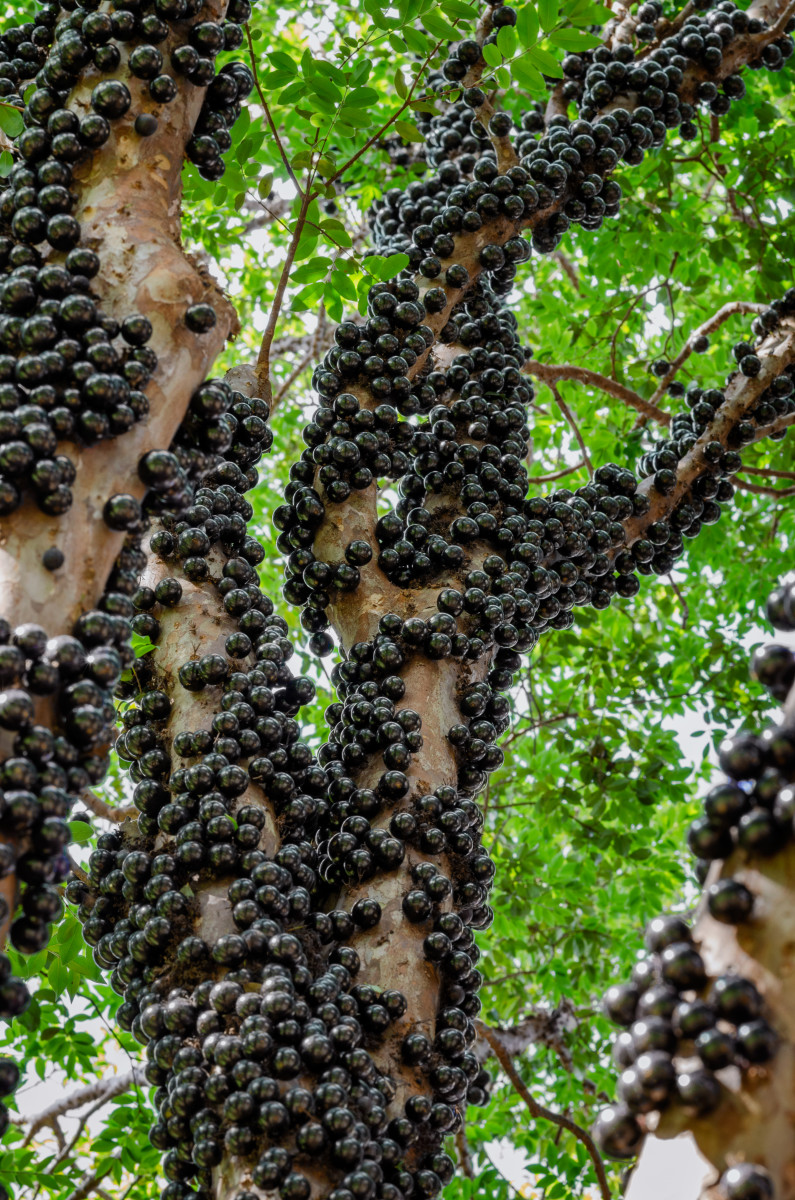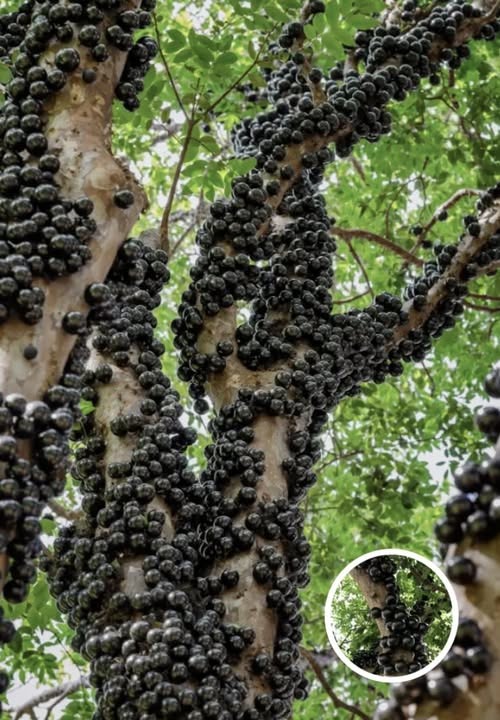In the world of exotic trees, the jabuticaba tree stands out for its unique feature of bearing fruits directly on its trunk. Native to South America, this remarkable tree produces purplish gems that are not only delicious but also versatile. The fruits can be consumed raw or used to craft jellies, jams, juices, and even wine.

The jabuticaba tree belongs to the Myrtaceae family and thrives in several Brazilian states, including Rio de Janeiro, Goiás, and São Paulo. Its name is derived from the Tupi words “jaboti” and “caba,” meaning “the place where tortoises are found.” The fruit’s distinctive white pulp has also led to interpretations likening it to “turtle fat.”

One of the most striking features of the jabuticaba tree is its fruit-bearing pattern. Unlike most trees, which produce fruits on their branches, the jabuticaba tree’s fruits grow directly on its trunk. In some cases, the profusion of fruit can make the tree barely discernible.
The fruit’s leaves start out salmon-colored and darken to a rich green as they mature. When ripe, the fruit transitions from dark purple to nearly black, signaling its readiness for consumption or winemaking. The fruit ripens quickly, typically within 20 to 25 days, making it readily available for use.

Social media users have been captivated by the jabuticaba tree’s unique appearance and bounty. Many have expressed awe and nostalgia, sharing their experiences with the tree’s fruit. The jabuticaba tree stands as a testament to nature’s ingenuity, offering not only sustenance but also a source of wonder and delight for those fortunate enough to encounter it.
The jabuticaba tree’s uniqueness has sparked admiration and curiosity, reminding us of the boundless beauty and diversity of the natural world. Its presence evokes a sense of wonder and appreciation for the remarkable intricacies of nature’s design, enriching our lives with its bountiful offerings and timeless allure.


